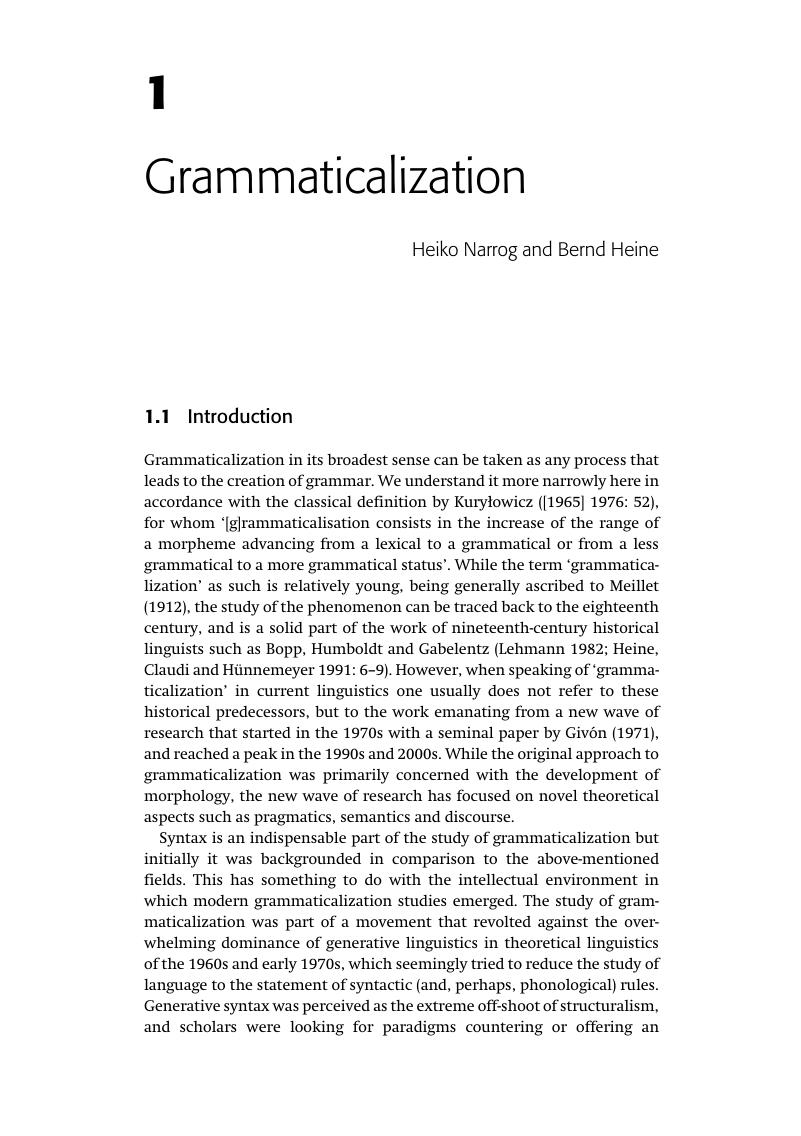Book contents
- The Cambridge Handbook of Historical Syntax
- Cambridge Handbooks in Language and Linguistics
- The Cambridge Handbook of Historical Syntax
- Copyright page
- Contents
- Figures
- Tables
- Contributors
- Abbreviations
- Introduction
- Part I Types and Mechanisms of Syntactic Change
- 1 Grammaticalization
- 2 Degrammaticalization
- 3 Exaptation
- 4 Reanalysis
- 5 Analogy and Extension
- 6 Restructuring
- 7 Parameter Setting
- 8 Contact and Borrowing
- Part II Methods and Tools
- Part III Principles and Constraints
- Part IV Major Issues and Themes
- Part V Explanations
- Part VI Models and Approaches
- Index
- References
1 - Grammaticalization
from Part I - Types and Mechanisms of Syntactic Change
Published online by Cambridge University Press: 28 April 2017
- The Cambridge Handbook of Historical Syntax
- Cambridge Handbooks in Language and Linguistics
- The Cambridge Handbook of Historical Syntax
- Copyright page
- Contents
- Figures
- Tables
- Contributors
- Abbreviations
- Introduction
- Part I Types and Mechanisms of Syntactic Change
- 1 Grammaticalization
- 2 Degrammaticalization
- 3 Exaptation
- 4 Reanalysis
- 5 Analogy and Extension
- 6 Restructuring
- 7 Parameter Setting
- 8 Contact and Borrowing
- Part II Methods and Tools
- Part III Principles and Constraints
- Part IV Major Issues and Themes
- Part V Explanations
- Part VI Models and Approaches
- Index
- References
Summary

- Type
- Chapter
- Information
- The Cambridge Handbook of Historical Syntax , pp. 7 - 27Publisher: Cambridge University PressPrint publication year: 2017
References
- 28
- Cited by

